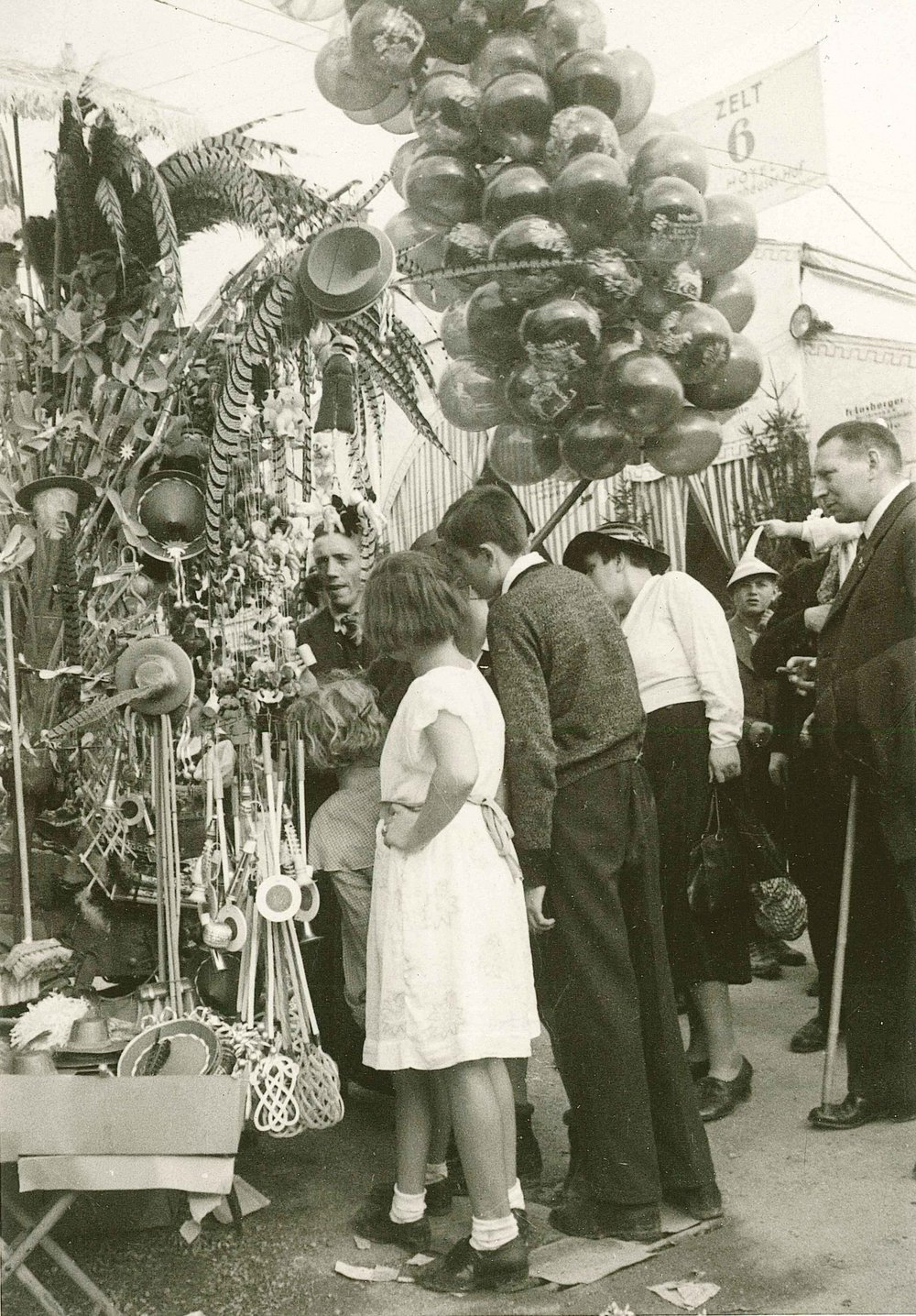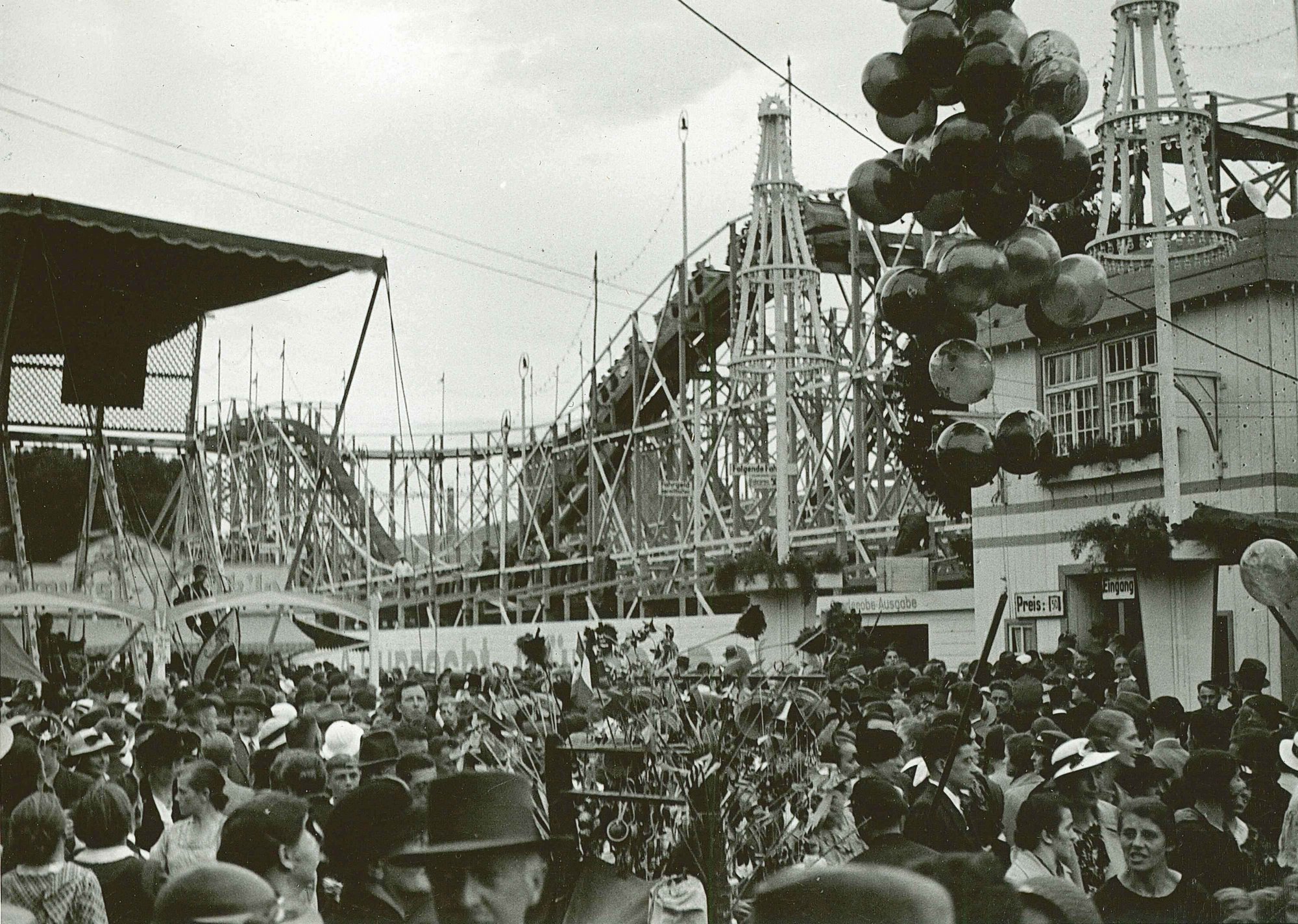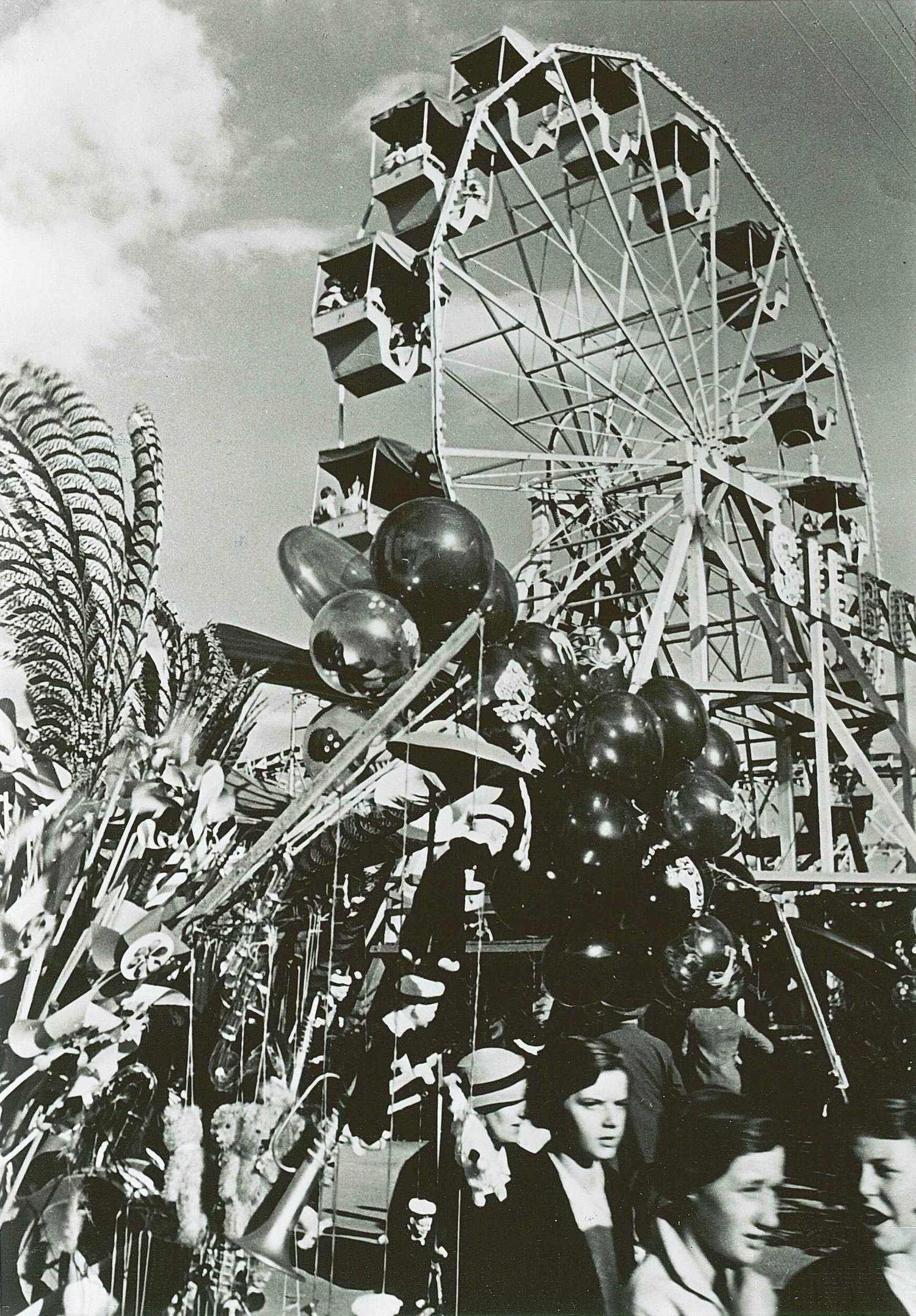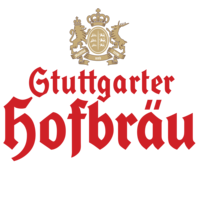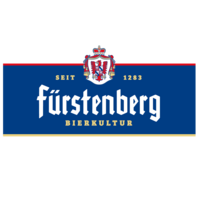History
The Cannstatter Volksfest looks back on a long and unique history.
Originally organized as a harvest festival, it has developed into one of the largest folk festivals in the world.
Eruption of Mount Tambora
Eruption of Mount Tambora on the island of Sumbawa, in present-day Indonesia. The result: a year without summer. Gases and dust caused climate changes for years, leading to crop failures and famines in southern Germany.
1815Accession of King Wilhelm I.
The young King Wilhelm I. took office at the age of 34. He assumed power in Württemberg during the "Year Without a Summer," a time marked by crop failures and famine.
1816Founding of the “Central Office of the Agricultural Association”
King Wilhelm I. and his wife Katharina founded the “Central Office of the Agricultural Association” to promote agriculture – the foundation for what is known today as the Cannstatter Volksfest.
1817First Cannstatter Volksfest
On September 28, 1818, one day after the king's 36th birthday, a large agricultural festival was held at the Cannstatter Wasen, featuring horse races and awards for outstanding achievements in livestock breeding. It was the "Agricultural Festival of Kannstadt"—essentially the first Cannstatter Volksfest.
1818Founding of the University of Hohenheim
The University of Hohenheim was founded on 20 November 1818. It dates back to the agricultural teaching, research and model institute established by King Wilhelm I.
1818Parade and anniversary column
For the first time, a parade with more than 10.000 participants and over 100.000 spectators lining the streets is reported. King Wilhelm I. celebrates his 25th anniversary of reign. The anniversary column on the Schlossplatz is donated in his honor.
1841University of Hohenheim becomes an academy
The University of Hohenheim was elevated to the status of an Agricultural Academy by decree of Wilhelm I.
1847Flooding on the Wasen
Flooding at the Wasen: The floodwaters wash away the festival tents. The festival has to be canceled.
1851Imperial meeting at the Wasen
Imperial meeting at the Wasen: King Wilhelm I. welcomes Emperor Napoleon III. and Tsar Alexander II. of Russia at the folk festival on September 28.
1857Arrangement of the stalls
The official and intelligence journal for the Cannstatt district reports on the folk festival, where the stalls are, for the first time, “arranged in three main streets and numerous side streets.”
1860Arrangement of the stalls
On September 28, 1876, Emperor Wilhelm I. and his son-in-law, Grand Duke Friedrich I., visited the festival, as did the same in 1881.
1876Change in event frequency
By order of King Charles, son and successor of William I., the Cannstatter Volksfest was no longer held annually, but only every two years. This arrangement remained in place until his death (1891).
1882Improvement of the festival grounds
The district town of Cannstatt will be merged with the residential city of Stuttgart, but not incorporated. The festival grounds will be improved.
1905Suspension during the First World War
During the First World War (1914-1918), the festival was suspended. In the years that followed, the fruit column was considered a "monarchical relic" and was no longer erected.
1914First radio broadcast
For the first time, the radio reported on the folk festival: 9.839 registered radio listeners of Süddeutscher Rundfunk (now SWR) witnessed the “first current reporting from the Wasen”.
1924Break for the exhibition
The festival was paused in favor of the exhibition of the “German Agricultural Society”.
1925National Socialist phase
The Nazi era lasted between 1933 and 1939. Five folk festivals took place during these years. In 1933, the folk festival was canceled in favor of the 15th German Gymnastics Festival. A harvest festival took place on the market square as a replacement. The 103rd folk festival in 1938 was the last during the Nazi era. The outbreak of war on September 1, 1939, abruptly ended all reconstruction efforts.
1933Folk festival and return of the fruit column
For the 100th Volksfest, the Fruit Column returns to the Wasen. The anniversary year will also see the launch of an Agricultural Festival (LWH). It will remain the only one during these difficult political times.
1935New beginning after the war
The new beginning is overshadowed by the consequences of the war and the plight of refugees. The Cannstatter Wasen presents a sad sight in the face of the rubble. The first festival after the war bears the modest title "Autumn Festival."
1949Return of the fruit column
The fruit column returns to the Wasen and is set up again for the first time.
195380th Agricultural Festival
The 80th Agricultural Festival takes place. After the Second World War and at the beginning of the 1950s, the festival initially lasted ten days, then twelve.
1954First large brewery tents
For the first time, four tents from Stuttgart's major breweries will be set up at the Cannstatter Volksfest.
1957New rotation for the LWH
A new three-year cycle with a large agricultural exhibition is agreed for the LWH.
1965Extension of the folk festival
The duration of the Cannstatter Volksfest will be extended to 16 days, and there will also be a new fruit column. It is 26 meters high and weighs three tons.
1972Renovation of the Wasen
The Wasen is being renovated and the festival grounds are being redesigned. Due to the closure of the Stuttgart Wulle Brewery, there are now only three brewery tents.
1982Premiere for local transport
Premiere for local transport: The first light rail stops at the “Fruchtsäule” stop.
1988150th Cannstatter Volksfest
The 150th Cannstatter Volksfest will be celebrated with a grand parade. The 93rd Agricultural Festival will complement the festival's anniversary.
1995New motto and rotation for the LWH
Under the motto "Discover the Farmer in You," the 97th LWH is being organized for the first time by the in.Stuttgart event company. The cycle is also being adjusted from three to four years.
2006Extension of the folk festival
The Cannstatter Volksfest will be extended by one day, opening on Fridays starting in 2007 and now lasting 17 days. SWR will broadcast the opening ceremony live in the evening program.
2007Second Historical Folk Festival
The Historical Folk Festival is taking place for the second time on Stuttgart's Schlossplatz. It is scheduled to take place every four years, in the same rhythm as the Agricultural Festival.
2022![[Translate to English:] [Translate to English:]](/fileadmin/_processed_/7/e/csm_2026_Logo_WASEN_223a8e67c3.png)
